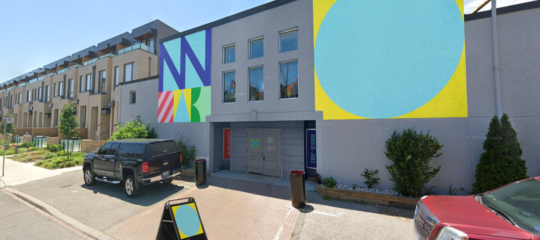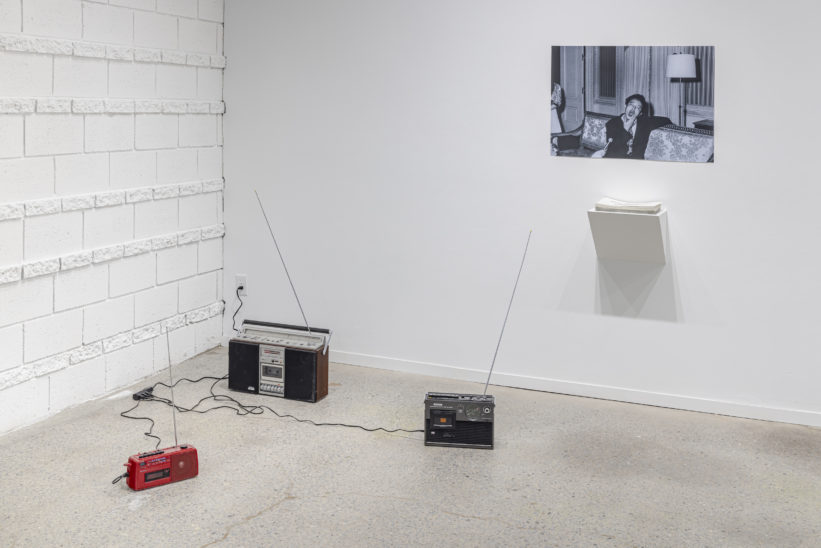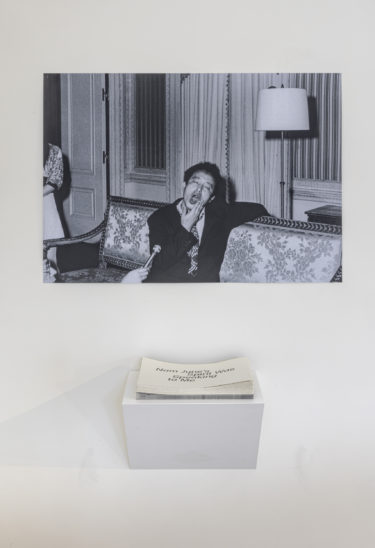Aki Onda’s practice communes not only with things—particularly what he calls “the rubble and ruin of old technologies”—but also with spirits. Nam June’s Spirit Was Speaking to Me is a project begun by chance. One evening during a residency in a suburb of Seoul in 2010, Aki was listening to a hand-held radio when he believed he intercepted a transmission by artist and composer Nam June Paik. For Aki, it was an invitation to begin to work together, to conjure new music via the radio waves. It made sense that Nam June chose that moment to communicate: at the time, Aki was immersed in the late artist’s artworks and archival materials in South Korea. Over the next few years, they continued their communications in different cities around the world, with recordings made in Cologne, Germany in 2012, Wrocław, Poland in 2013, Lewisburg, USA in 2014, and Toronto in 2022.
Nam June frequently cited traditional belief systems and symbols in his work. Invested in the transformative potential of ceremony and ritual, these became the ideological and spiritual basis to stage his installations and performances. Imprecisely called “shamanism” in English (each of these ceremonies and practices has its own specific name), for Nam June, these traditions were a way to frame his collaborations with new media: televisions, projectors, tube amplifiers, film, video, and so on. For Nam June, technology had a spirit that could be conjured through such actions as generating a wavering spectre of light from a TV screen by the force of a strong magnet or creating a strange cello from a stack of monitors, complete with a base and a wooden neck, played by a single amplified string. Aki carries on this tradition in his own work, collaborating both with the spirits of old technologies and the spirits of his mentors.
Music also links the two artists. Nam June began his career as a classical pianist and only began creating art after studying musicology, in particular Arnold Schoenberg and the twelve-tone technique. Shortly after, as part of what Nam June came to call “action music,” he jumped up from the crowd and cut off John Cage’s tie mid-performance. In doing so, he ruptured the presumed boundary between audience and performer. Aki’s work takes this further by positing that the “performer” need not be human, and the audience is found not only among the living but also with the spirit of the dead. In this way, media is never truly obsolete—it simply communicates otherwise.
This iteration is a part of an installation commissioned by Toronto Biennial of Art. Original recordings were commissioned by documenta 14 Every Time A Ear di Soun, 2017. Made possible with the generous support of the Japan Foundation.
As a part of Aki’s work, there is printed ephemera available for visitors to download to learn more about the international radio broadcasts in conjunction with the Toronto Biennial.
Audio Didactic:
Bio
Aki Onda (born in 1967, Nara, Japan; lives and works in Mito, Japan) is an artist and composer. His works are often catalyzed by and structured around memories—personal, collective, historical—such as his widely-known project, Cassette Memories (2004–ongoing), drawn from three decades of field recordings. Crossing genres, he has been active internationally in art, film, music and performance. His artistic collaborators include Michael Snow, Ken Jacobs, Loren Connors, David Toop and Akio Suzuki.
Exhibition Site
72 Perth Avenue

72 Perth Ave
Toronto ON
M6R 2C2


